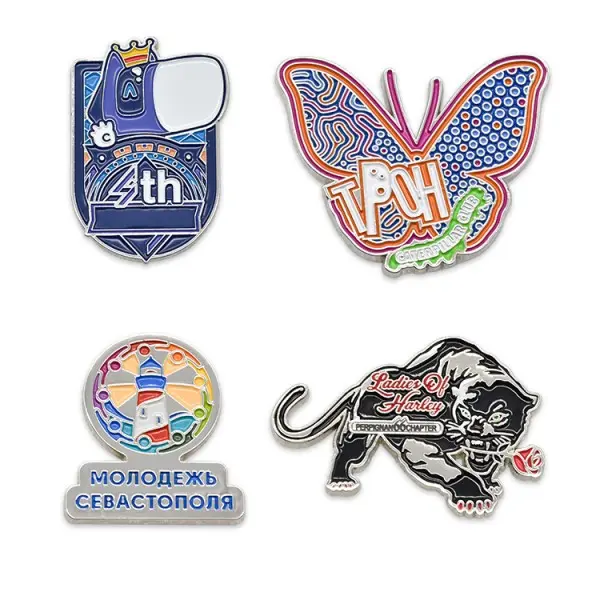Different materials of badge maintenance methods vary, the following are some maintenance badges to extend its service life common methods:
Badge of metal
Avoid scratching: The metal badge is relatively hard, but it is still easy to be scratched by sharp objects. When wearing or storing, avoid putting sharp objects such as keys and knives together to prevent scratches on the surface. If the badge has parts such as pins or hooks, be careful not to let them rub against each other as well.
Prevent oxidation: Many metal badges are easy to oxidize and rust, especially iron, copper and other materials. To prevent oxidation, the badge can be wiped regularly with a soft cloth to remove dust and moisture from the surface. When not wearing, it is best to put the badge in a sealed bag or jewelry box to isolate the air. For some metal badges that are easy to rust, you can also apply a small amount of anti-rust oil, but pay attention to the uniform application to avoid the oil stain affecting the appearance of the badge.

Clean stains: If there are stains on the surface of the metal badge, you can wipe it with mild soapy water. Soak the badge in soapy water for a few minutes, then scrub gently with a soft brush, remove stains, rinse with clean water, and dry with a clean soft cloth. For some stubborn stains, special metal cleaners can be used, but they should be operated in accordance with the requirements of the instructions to avoid damage to the badge caused by excessive cleaning.
Enamel badge
Avoid collision: The surface of the enamel badge is a layer of glassy enamel coating, although hard but relatively brittle, it is easy to break or break the porcelain by collision. Wear and store with special care to avoid collision with hard objects.
Pay attention to the acid and alkali environment: enamel coating is more sensitive to acid and alkali and other chemicals, and should avoid contact with acidic or alkaline liquids and gases. For example, do not leave the badge in the kitchen for a long time where there are oil fumes and chemical cleaners, and do not let the badge come into contact with chemicals such as perfume and sweat. If accidentally stained, should be promptly washed with water and dry.
Gentle cleaning: When cleaning an enamel badge, gently wipe it with a soft, damp cloth and avoid using a rough cloth or brush to avoid scratching the enamel surface. If there is dust or stains, you can use a small amount of neutral cleaner, but be careful not to let the cleaner seep into the edge or back of the badge, so as not to damage the internal structure.
Cloth badge
Gentle washing: If the cloth badge needs to be cleaned, it is best to use a gentle way. You can use your hands to add the right amount of neutral detergent in warm water and gently rub the badge to remove the stain. If there are metal accessories on the badge, avoid soaking the metal part in water for a long time to avoid rust. After washing, use a dry towel to absorb moisture, and then lay flat to dry, do not be exposed to the sun, so as not to fade the fabric.
Moth-proof and mildew proof: the cloth badge is vulnerable to moth and mold. When stored, you can put some insect repellent and desiccant in the storage box to maintain a dry and ventilated environment. Check the badge regularly. If there are signs of mold, wipe it clean with a clean damp cloth and put it in a ventilated place to dry.
In addition, regardless of the material of the badge, it is necessary to avoid prolonged exposure to sunlight, because the ultraviolet light in the sun may cause the badge to fade or deform. At the same time, the badge should be stored in a dry, cool and ventilated place to avoid damage to the badge in a humid and high temperature environment.
Post time: Apr-01-2025
